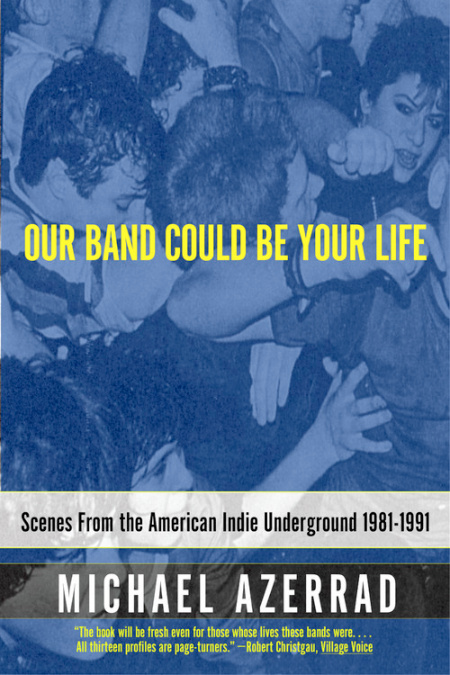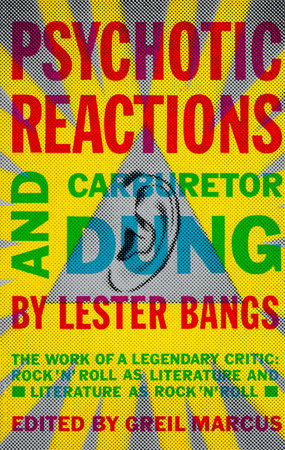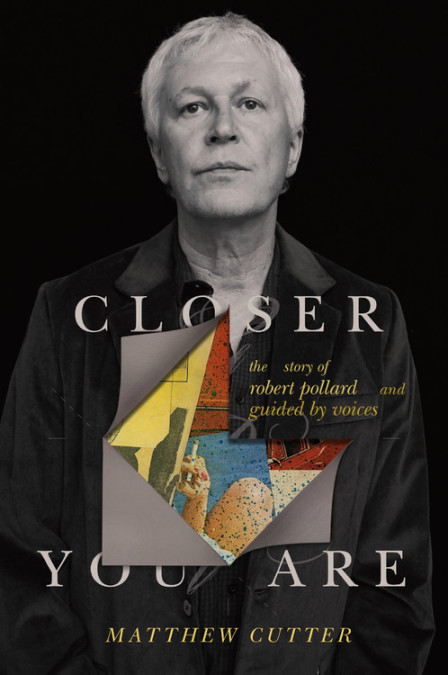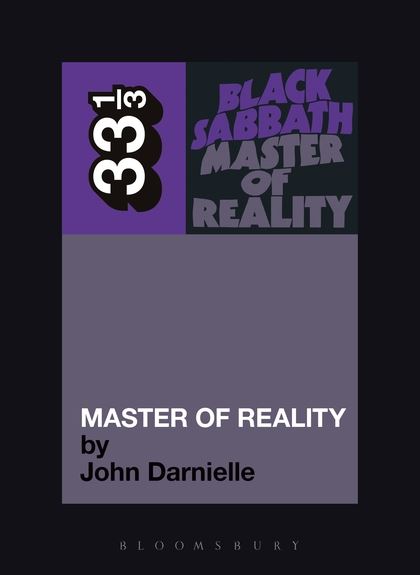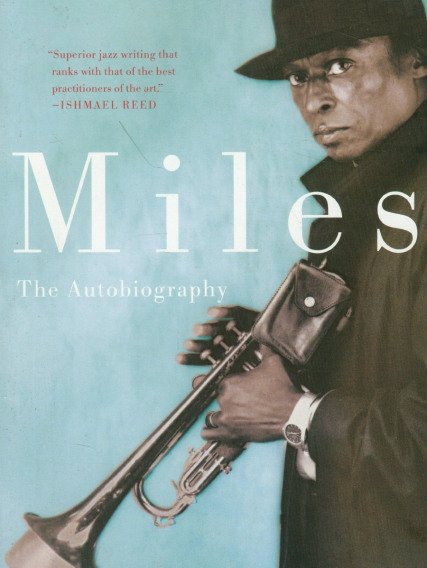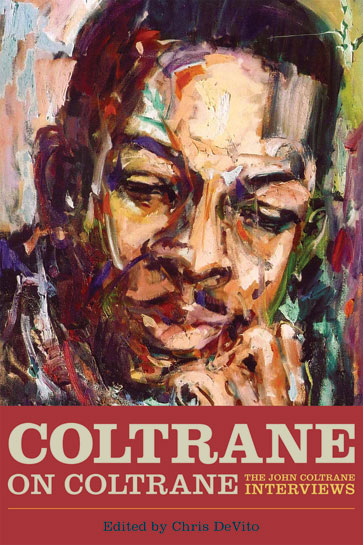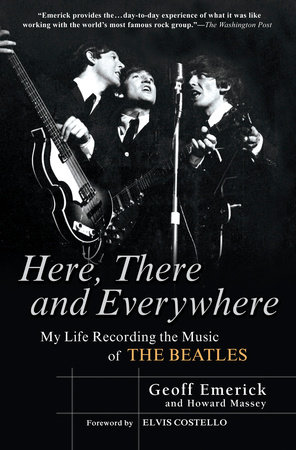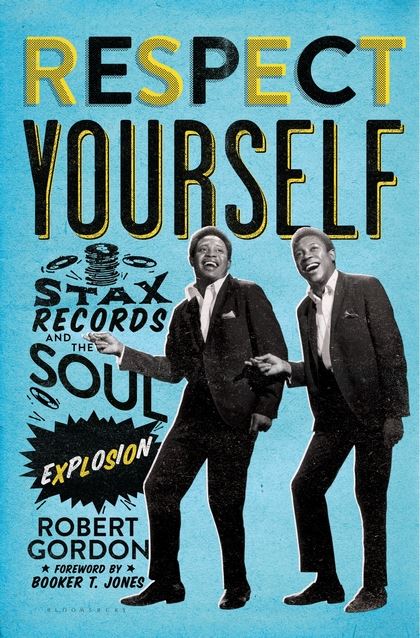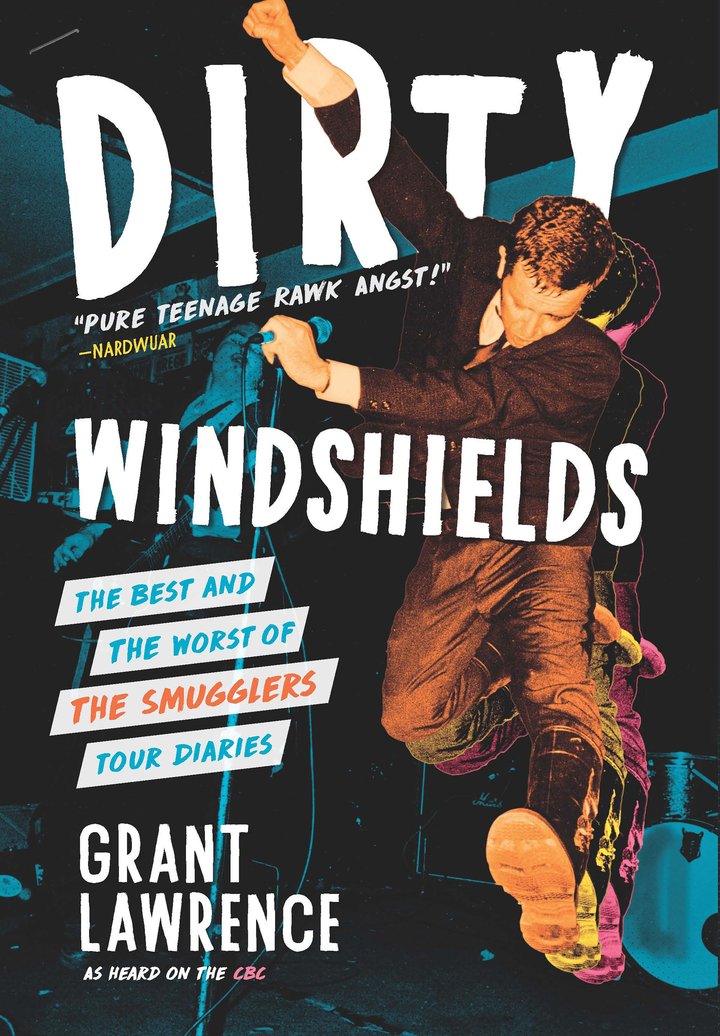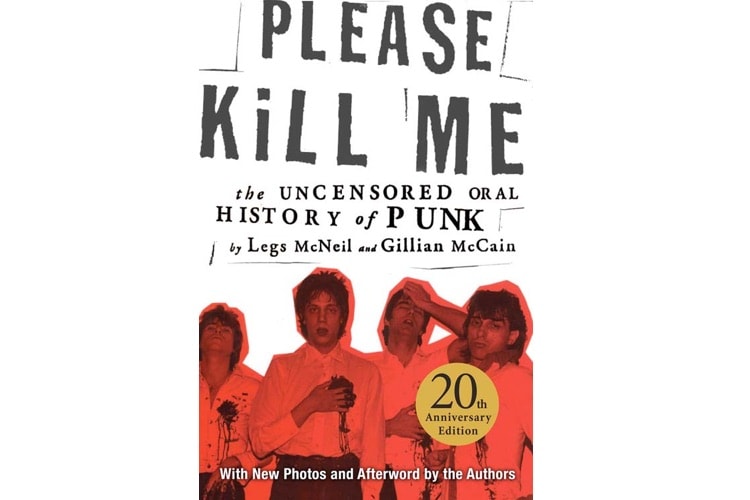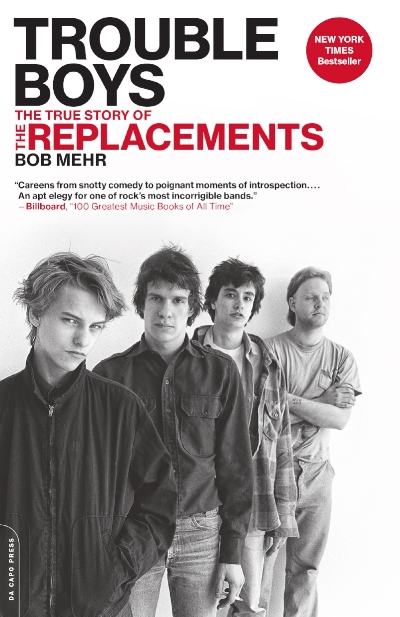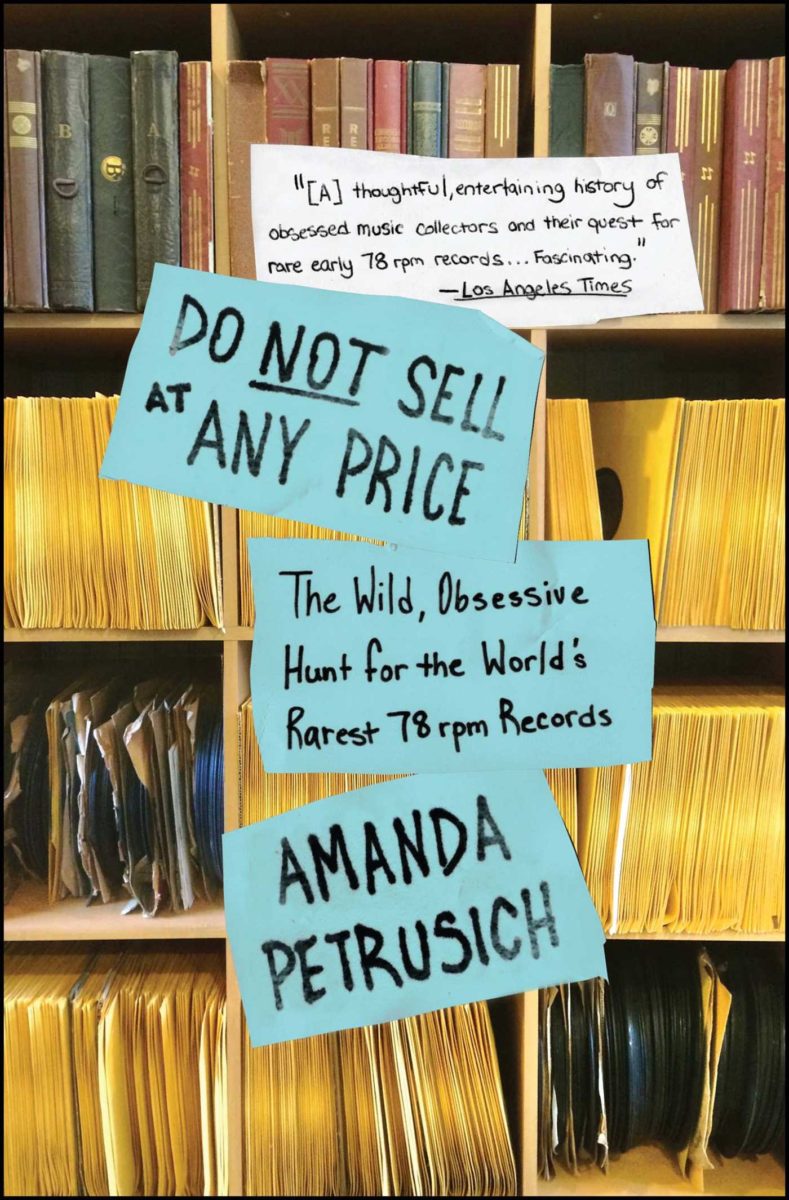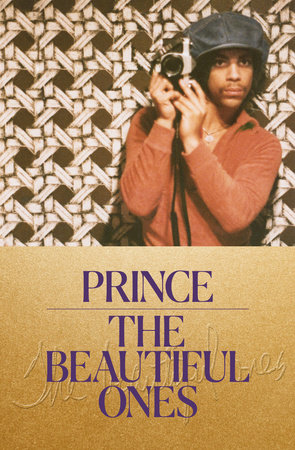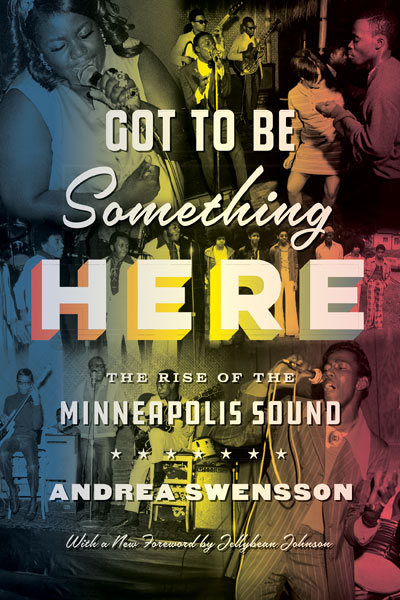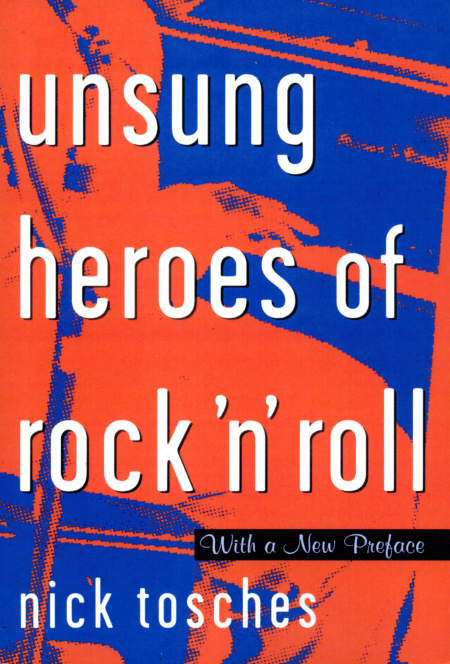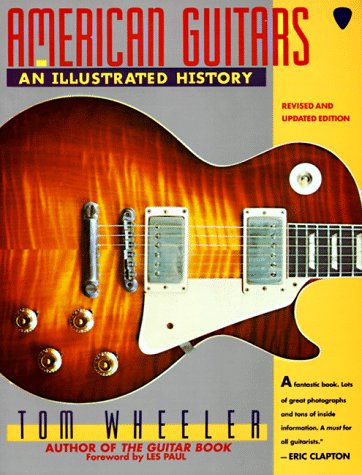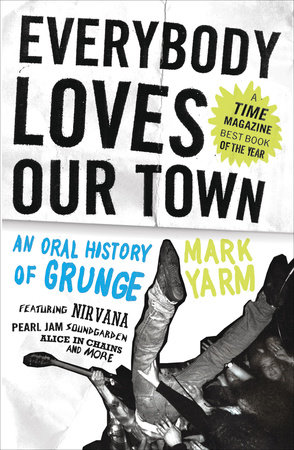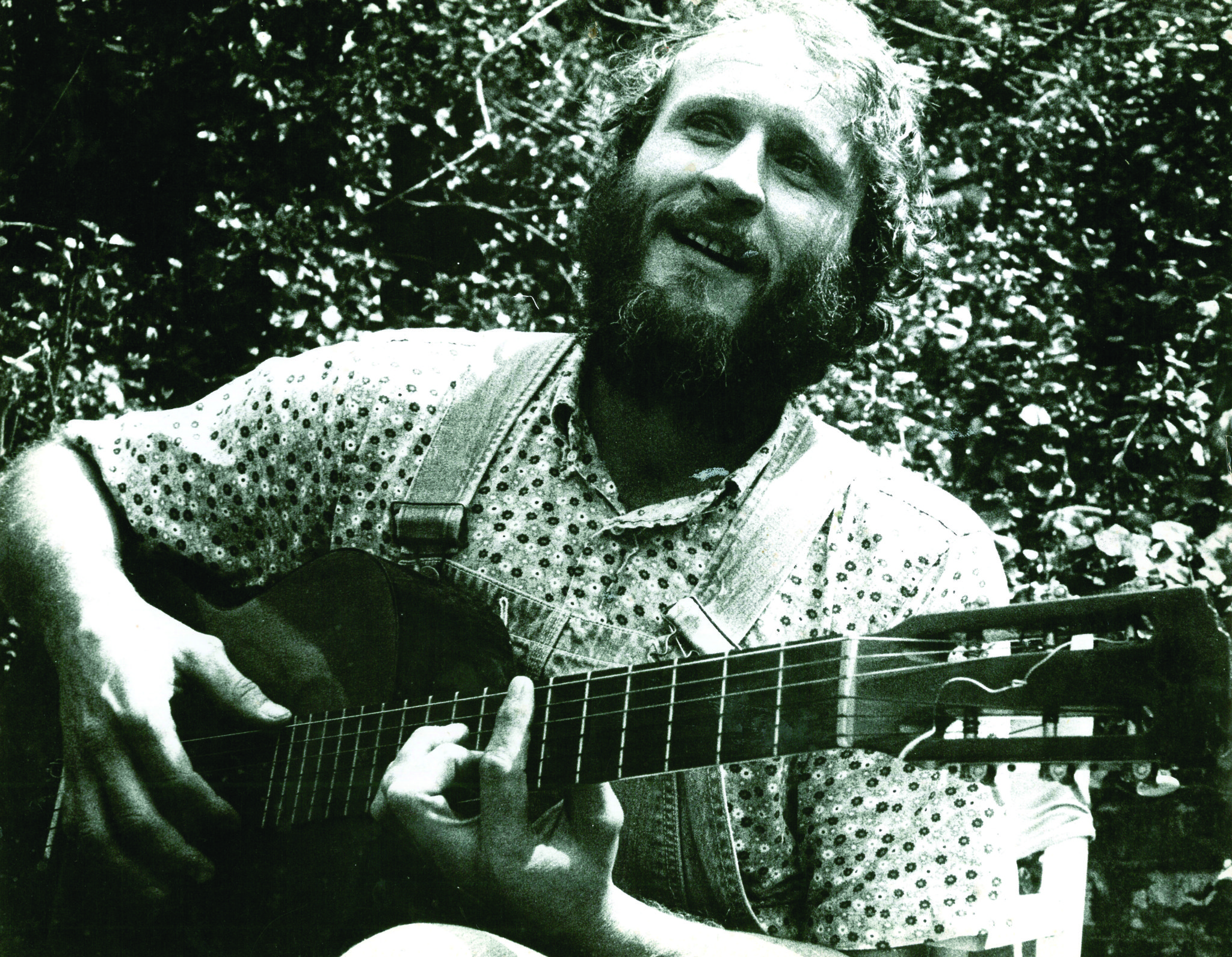Most of us haven’t seen live music in more than a year. As the COVID-19 vaccination rollout has allowed bands to begin booking summer and fall tours again, the reality of concerts returning is almost here. But if you have a venue-sized hole in your heart waiting to be filled by the void of extreme decibels, diving into a few books about music might begin to prepare you for the upcoming sweat-drenched singalongs.
Instead of a typical list of “best” music books, this is a series of suggestions based on various types of writing, musical genres, and people. It includes memoirs, oral histories of music scenes, tour diaries, instrument/history-driven books, and books about simply loving music. You can find links to our recommended editions of each title by clicking on the cover images and book titles.
Our Band Could Be Your Life: Scenes From the American Indie Underground 1981-1991 by Michael Azerrad (2001)
If the thought “I could be in a band” has ever crossed your mind, Our Band Could Be Your Life is the bible that can help turn that seed of a thought into a reality. Profiling 13 indie punk bands — from SST records’ Black Flag and Minutemen to The Replacements, Mission of Burma, Minor Threat, and Sonic Youth among others — Michael Azerrad provides substantial portraits of bands who realized if you want to be heard, you have to make a lot of noise. This is the playbook for bands who made their name by logging thousands of miles in white vans and carved the well-worn DIY-touring circuits that exist today. At the very least, it will introduce you to some amazing music, the people who created it, and the lives they pursued to break out onto college radio across the country.
Psychotic Reactions and Carburetor Dung by Lester Bangs (1987)
What more can, or really needs, to be said about Lester Bangs? Sure, Phillip Seymour-Hoffman played “the World’s Greatest Living Rock Critic” in Almost Famous, but Psychotic Reactions comprises the essential essays that gave Lester Bangs that title. His writing can be bewildering and infuriating at times, but when he’s on, he’s a special kind of brilliant. No writer has ever translated the spirit of rock ’n’ roll as well as Lester. He writes like a Marshall amplifier stack — earsplitting, overdriven, and unmerciful. His infamous combative interviews with Lou Reed are the centerpiece, but his profiles on The Clash, The Stooges, and his review of Astral Weeks, are what make this book worth rereading time and again. His words have the rare ability to make you see a song you know by heart in a completely new light, and his “kill your heroes” approach brings the musicians down from elusive stars into simply being human beings who made great music.
Closer You Are: The Story of Robert Pollard and Guided By Voices by Matthew Cutter (2018)
How did a 30-something-year old elementary school teacher from Dayton, Ohio, wind up becoming an underground rock icon and one of the most prolific songwriters the world has ever known? The answers await you in the story of Robert Pollard and Guided By Voices. Matthew Cutter’s biography is at times hilarious (GBV meeting Peter Buck from R.E.M.), frustrating (the multiple breakups and lineup swaps), and inspirational. Who else has ever pitched a no-hitter in college baseball and then published more than 2,800 songs in a lifetime? Tracing his path from a competitive teenager with a killer record collection into a beer-swilling, high-kicking frontman, Cutter follows the roots that led Pollard into the alt-rock canon. For a group whose greatest ambition was to install a urinal in their basement practice space and make some songs for cheap, their records have stood the test of time as some of the defining DIY recordings of the ’90s. Forget all the tropes about rock being a young man’s game; Guided By Voices proved, and continue to prove, that there’s no such thing as being too old to one day motor away.
33 1/3: Black Sabbath’s Master of Reality by John Darnielle (2008)
Most 33 1/3 books provide a well-researched history of an album with interviews, analysis of the work’s lasting impact, and why the songs changed the world for those who flock to them. John Darnielle, leader of The Mountain Goats, attacked from a different direction. His is a fictional account of an institutionalized teenager named Roger Painter whose love of Black Sabbath’s Master of Reality has made his family and doctors fear he’s going down an irredeemable life path of drugs, satanism, and violence. When the doctor takes Roger’s Walkman and his tape of Master of Reality, Roger begins to write in his doctor-prescribed journal about what the music means to him. Darnielle articulates how metal music can be the most welcoming community for those who don’t want to play by all of society’s rules. The disconnect between the doctor wanting Roger to conform, and Roger wanting to just listen to his music leads to a wonderful series of praise of each song on the record, and why listening to “Sweet Leaf” and “Children of the Dead” is more likely to enlighten someone than damn their soul for all eternity. Darnielle would later write the New York Times bestseller and National Book Award nominee Wolf In White Van. This 33 1/3 is equally well-written and an essential, impassioned defense of the power of music.
Miles: The Autobiography — Miles Davis with Quincy Troupe (1989)
Miles Davis’ autobiography takes you inside one of the greatest musical shapeshifters to have ever walked the planet. From his early days as a sideman in bebop with Charlie Parker and Dizzy Gilespie through his cool jazz, hard bop, fusion, and every other phase Miles explored, you get the story of jazz through Miles’ life. It’s a warts-and-all portrait of the trumpeter that takes us through his struggles with drug addiction, encounters with racism, and the era when he stopped playing trumpet. Davis was a complex person, and he makes no excuses for his worst actions. He’s vain, he’s at times appalling, but that doesn’t stop him from telling his story. But in the end, he provides the clearest window into how he always pushed himself to be on the forefront of trends to avoid becoming a relic of the past.
Coltrane on Coltrane: The John Coltrane Interviews by John Coltrane, edited by Chris DeVito (2010)
John Coltrane is often described as an intense man based on people who watched him perform, but those who spoke to him found him to radiate a gentle wisdom. This book collects interviews and profile stories about Coltrane from across his career. His words are almost as remarkable as his music, and this collection provides a great example of what it might have been like to speak with him. Though it’s unclear at times for casual fans where in his career many of these interviews took place, you still feel his creative presence unfolding across the pages. This is a great introductory book to John Coltrane. I immediately bought more of his records and biographies after finishing it. Coltrane’s catalog is vast, but understanding him as a person and as a thinker helps to figure out what makes his music so revolutionary.
The Dead Moon Book by authors/editors Fred Cole, Toody Cole, Andrew Loomis, Szim, Erin Yanke and Eric Isaacson (2018)
Years after the release of the excellent documentary Unknown Passage: The Dead Moon Story, Portland’s greatest band was given the book treatment. This book is huge, full of incredible photos, features a collection of lyrics, and holds two 12-inch best-of Dead Moon LPs in its covers. It follows the story of Dead Moon chronologically, with Fred Cole’s early days in psych bands such as The Lollipop Shoppe, and the pre-Dead Moon projects (The Rats, Range Rats) with the love of his life and greatest creative partner, Toody. But once drummer Andrew Loomis joined Fred and Toody, Dead Moon was born. Everything Dead Moon is here: The homemade guitars, the matching logo tattoos, and of course, the candle burning on an upside down bottle of Jack Daniels. If the name Dead Moon is new to you, stop reading and go here. Or here.
33 1/3: Lou Reed’s Transformer by Ezra Furman (2018)
Great songwriters aren’t always able to transfer their talents to book form as easily as you might imagine, but Ezra Furman packs her 33 1/3 about Lou Reed’s Transformer with as much passion as she crammed into her 2018 rock epic, Transangelic Exodus. Ezra’s writing conveys so clearly what it means to care for an album that is fundamental to your music-loving existence that it’s bound to infuriate anyone who has ever tried to write about music. Ezra balances why the songs themselves are revered with detailed stories of who and what the songs are about. It’s a fascinating collection that brings Reed’s songs to life and grapples with their glorious or sometimes grotesque meanings. Most importantly, it covers how a work of art can help introduce us to the true self we sometimes deny.
Recommended listening: Transangelic Exodus by Ezra Furman
Here, There And Everywhere: My Life Recording the Music of The Beatles by Geoff Emerick (2007)
No music book list is complete without something Beatles. Geoff Emerick began as an assistant studio engineer at EMI at age 15, and in Here, There and Everywhere he breaks down how the Beatles were able to break all of the established rules in the studio to change how a band could record. From breaking down the technical innovations and risks — such as close-miking Ringo’s drums despite potentially exploding the microphones, and wiring Wurlitzer speakers together to make John’s vocals on “Tomorrow Never Knows” sound like he was yelling from a mountaintop — to the band’s broader explorations with tape loops and the avant-garde, Emerick lays out the Beatles gold that even your most die-hard Beatles friend will be happy to hear. Emerick had a front row seat to some of the most important recordings ever made. His memory is incredible, and so are the stories he shares in this book.
Further recommended Beatles reading: Revolution in the Head: The Beatles Records and the Sixties by Ian MacDonald; You Never Give Me Your Money: The Beatles After the Breakup by Peter Doggett
Respect Yourself: Stax Records and the Soul Explosion by Robert Gordon (2013)
The story of Stax Records is, like so many musical ones, triumphant, terrific, and ultimately tragic. Robert Gordon (It Came From Memphis) captures the spirit of Stax records as it grew out of a garage recording outfit into an international powerhouse. It’s the story of a record company that groomed some of the finest musicians you’ll ever hear, simply by giving anyone who walked through its doors a chance to audition, regardless of race or class — including a young driver named Otis Redding. Bank teller and fiddle player Jim Stewart founded the label. His sister, Estelle Axton (hence the genesis of the name StAx), partnered with him and put her life savings on the line because she believed in his vision. At its core is the story of Stewart and his efforts to turn his passion for music into a prosperous business. To do so, he trusted an evolving cast of musicians, including house band Booker T. and The M.G.s, principle songwriters Isaac Hayes and David Porter, and his later business partner Al Bell. But as Stax grew, so did the pressures. The label experienced unending racism for being an integrated business in Memphis and was taken advantage of by their bank’s unlimited credit offers and handshake deals with larger corporations. Gordon celebrates the music created on the Stax/Volt/Enterprise labels, but also dives into the heartbreak, such as the plane crash that killed Otis Redding and most of The Bar-Kays, the assassination of Martin Luther King Jr. just miles from their home base, and the label’s turn from a family-style company into a hollow corporate entity on its last legs. If you only read one book from this article, this is a strong candidate to consider.
Dirty Windshields: The Best and Worst of The Smugglers’ Tour Diaries by Grant Lawrence (2017)
Once bands reach the luxury bus touring phase, they often romanticize the early days of crossing the country in an overstuffed van that smelled like cheap beer and body odor. Grant Lawrence’s tour diaries of his time leading The Smugglers of Vancouver, B.C. maintains a rationally romantic view of their van days and crossing the Canadian border to try to break out in the U.S. But it also dives into the harsher aspects of life as a musician: the awful diet, playing shows in a strange town to an audience of one, and losing lifelong friends when you’re hundreds of miles from home. Much like a Smugglers concert, Lawrence’s story is endlessly endearing and energetic. His passion for music is present from the days he spent alongside his friend Nardwuar trying to schedule bands to play at their high school, through to the band’s glory days while signed to Lookout! Records. Add in stories of the Young Fresh Fellows destroying a dressing room, crossing paths with a similarly clothed band called The Hives, and the time The Smugglers were stuck in a flooded venue, and you’ve got some of the highest highs a rock n’ roll tour diary can offer. But when it’s time to pack up the suit and rain boots, Dirty Windshields’ final chapter is a stark examination of what it means to have lived a dream, even if it was a dream with an expiration date.
Please Kill Me: The Uncensored Oral History of Punk — Gillian McCain and Legs McNeil (1996)
If you think of the Sex Pistols and the Clash when the word punk rock is dropped, the cast of characters in this collection would proudly tell you you’re dead wrong — though they wouldn’t be that polite. Gillian McCain and Legs McNeil talk to the progenitors of punk rock — the crews at CBGB and beyond who birthed a movement in 1975 that sent shockwaves around the world. Please Kill Me begins with The Velvet Underground and The Stooges before diving deep into the world of The New York Dolls, The Ramones, Television, Patti Smith, Talking Heads, Dead Boys, and more. The book lives in the scene and values the fans as much as the musicians to give a feeling of what you might have seen on those Bowery streets at the time. It’s often ugly, but where else would punk rock thrive? By the time it reaches Britain and the masses, this crew insists punk has already run its course. While punk’s decline will forever be a matter of debate, Please Kill Me leaves no room for argument about when and where punk began. It was New York in 1975. These are the people who made it happen. These are the stories they have to tell about it. An essential read.
Trouble Boys: The True Story of the Replacements by Bob Mehr (2016)
This is the gold standard by which all music writing should be judged. Bob Mehr not only tracked down the notoriously difficult Replacements, but he convinced Paul Westerberg and Tommy Stinson to be honest, critical, and poignant about their lives and careers as some of the most renowned troublemakers in Midwestern punk. Mehr begins the book at guitarist Bob Stinson’s funeral with an exchange between two of Bob’s friends telling Westerberg, “You know, he really loved you,” with Paul unable to respond. The prologue sets the scene for a book that holds nothing back. It’s unflattering; it’s a joyous, romantic romp; it’s infuriating; it will make you spin Let It Be until your needle has cut a hole in the record. Mehr provides an objective look at a band that really could have used one in its prime. His research is meticulous, he busts legends, he adds to existing ones, and in the end comes away with arguably the most compelling music biography ever written. It’s by far the best I’ve read, and sure, I’m biased because The Replacements are my favorite band, but this book is a heavy hitter. It spares no shameful details, it lauds the band’s music with warranted praise, and presents the band as the conflicted humans they were and are. You can’t ask for more from a music book.
Do Not Buy or Sell at Any Price: The Wild, Obsessive Hunt for the World’s Rarest 78 RPM Records by Amanda Petrusich (2014)
Some records are legendary for how their sounds changed the world; other records are legendary due to the fact that only one or two copies are known to exist in the world. Amanda Petrusich quite literally scuba dives into the world of 78 RPM records and the history of some of the rarest records on the planet, from the Paramount catalog to Skip James and Geeshie Wiley. She also talks with the elite record collectors who track down these shellacked artifacts, preserve, and sometimes digitize them. No matter how good your ears may be, she finds the people who can tell you how many toothpicks are needed to add the perfect weight to the needle for each record’s perfect auditory experience. In an age where streaming services are the dominant force in music consumption, Petrusich’s book does an amazing job of communicating the incommunicable feeling that comes from dropping the needle on a record and experiencing sound in a physical format with all the weird love and care it entails. Petrusich also wrestles with how music is remembered by history: should the popular songs define the music of the day, or should the lesser-known, lost treasures be heralded by future generations?
The Beautiful Ones by Prince with Dan Piepenbring (2019)
Prince tragically died before he could finish writing his autobiography. He had big plans for it. He told his co-writer, Dan Piepenbring, that he wanted his book to end racism, to return master recordings to all Black artists, and serve as a template for how artists can create work on their own terms. Prince was never one to shy away from lofty self-imposed expectations, and the pages he completed for his book prove it. Piepenbring tells the hilarious story of how and why Prince selected him as his co-writer, his time with Prince at Paisley Park, and the trip to Australia where Prince forced him to read his handwritten introductory pages while he sat in the next room and telephoned Piepenbring to hear his opinion. Those handwritten pages are included, as well as hundreds of photos of Prince as he wrote his first albums and worked up to his first contract. We will never know what Prince’s full book would have entailed, but even a sneak peak behind the curtains of one of the all-time greats is an illuminating treasure. And the fact that he demanded contractual rights to pull it from all shelves at any time if his opinions of the book ever changed is just a wonderful Prince-ism.
Got To Be Something Here: The Rise of the Minneapolis Sound by Andrea Swensson (2017)
Every music scene has its forgotten heroes who paved the way for those who eventually stole the spotlight. Andrea Swensson traces the roots of the Minneapolis Sound that Prince would take global in the ’80s, and the major players who developed its style. Although the music is the core of the novel, it also focuses on the racial issues that kept Minneapolis segregated, including the installation of a controversial highway that went straight through the cultural heart of a Black neighborhood. But the music persisted and spawned clubs for the up-and-coming acts, and hangout spaces for teens who could simply show up and experiment with different instruments and other musicians. Swensson’s greatest achievement in this book isn’t showing that Prince and Andre Cymone were special children predestined for stardom, but rather that they were kids who had places where they could go and make music with friends and mentors. The Amazers, The Big Ms, The Valdons, and many more jump from the book’s soundtrack to fill out an already impressive batch of music from Minnesota.
Further recommended Minneapolis reading: Complicated Fun: The Birth of Minneapolis Punk and Indie Rock 1977-1984 by Cyn Collins
Unsung Heroes of Rock ’n’ Roll: The Birth of Rock in the Wild Years Before Elvis by Nick Tosches (1984)
Elvis is rightfully credited as the person who launched rock ’n’ roll into the stratosphere, but he is often also credited as its creator, which is a far less accurate accolade. Nick Tosches’ book digs into musicians who predate Elvis and defined what rock music could be. The information in here is absolutely essential, with profiles on unheralded rockers (Charles Brown, The Dominoes, Big Joe Turner) alongside artists who have become more well-known in recent decades (Screamin’ Jay Hawkins, Wanda Jackson, early Nat King Cole). He presents a series of short profiles of each artist, a detailed timeline of the music, and a full discography of their work. Tosches is a former Creem magazine writer who brought much of that trademark attitude to these pages. Not all of it translates well for a modern audience with some insensitive jokes and questionable language, but the information he presents is worth knowing for a fuller portrait of what rock is and where it originated.
American Guitars by Tom Wheeler (1982)
If you’ve ever wanted to know everything about electric guitars, this book gives you instruments to ogle from the entirety of American-made guitars up to the book’s publication in 1982. This is the place to go if you want to be able to tell a Fender Jaguar from a Jazzmaster at a moment’s notice (hint: check the pickguard), see how Gibson transitioned from their earliest acoustic guitars through to the futuristic Flying V’s, or simply drool over photos of Rickenbacker hollow bodies. Tom Wheeler aims to give the complete history of guitars created in the USA. Wheeler was the editor-in-chief of Guitar Player magazine from 1981 to 1991 before he left to teach journalism at the University of Oregon until his untimely death in 2018. To say he knows his stuff is a gross understatement. With incredible photographs and informative histories of each instrument and the journeys they have taken to production, Wheeler created an encyclopedia for the golden age of guitars that’s perfect for anyone who has ever looked at a stringed instrument and felt their gut churn. Wheeler was the greatest professor I had, and his writing is no different from his classes: completely engulfing, full of passion, and detailed beyond belief without ever being boring.
Everybody Loves Our Town: An Oral History of Grunge by Mark Yarm
A handful of long-haired Seattleites realized in the late ’80s that their guitars sounded pretty cool in drop-D tuning with a ton of slow, heavy distortion. The sludgy style wasn’t fast enough to be metal, too heavy to be punk. But as bands like The U-Men, Melvins, and Green River laid the foundation for grunge, Soundgarden, Alice In Chains, Pearl Jam, and Nirvana broke into superstardom. Mark Yarm’s (not Mark Arm) oral history captures the humor in this scene that is so often absent in documentaries. So much has been written about Sub Pop’s branding and Kurt Cobain’s pop-infusion that sent grunge and flannel into shopping malls everywhere, but Yarm doesn’t forget the smaller figures who, as the locals put it, were too ugly to be shown on MTV. Bands like Mudhoney, TAD, The Gits, and many more are given an equal voice with Eddie Vedder and Courtney Love. This book doesn’t shy away from the heroin, death, and self-destruction that ultimately toppled grunge, but it’s greatest strength is how it balances the importance of the music with the people who actually made it — and boy, do some of them have sharp tongues.
Stay up to date with all things Split Tooth Media and follow Craig on Twitter
(Split Tooth may earn a commission from purchases made through affiliate links on our site.)


